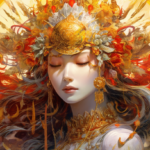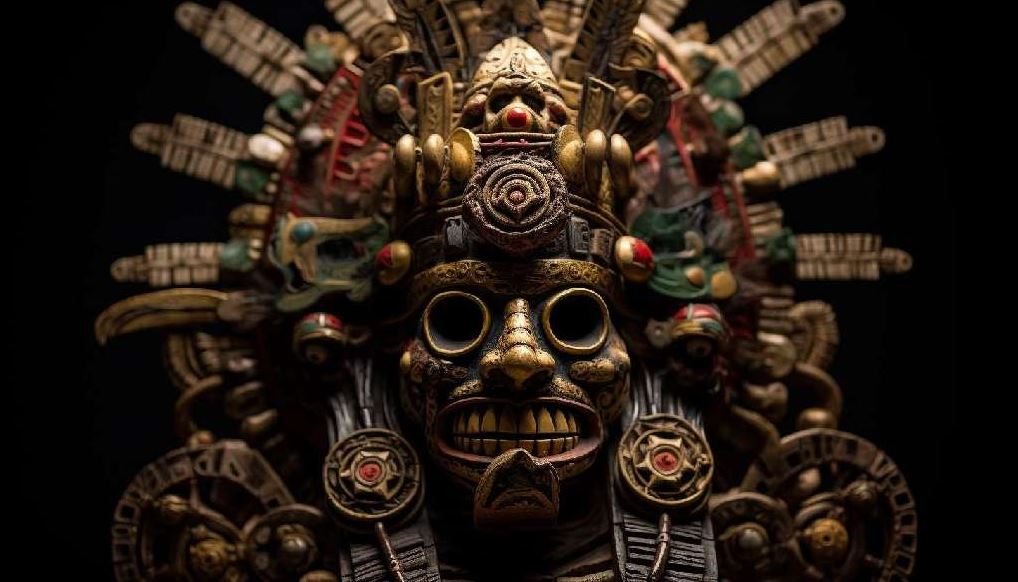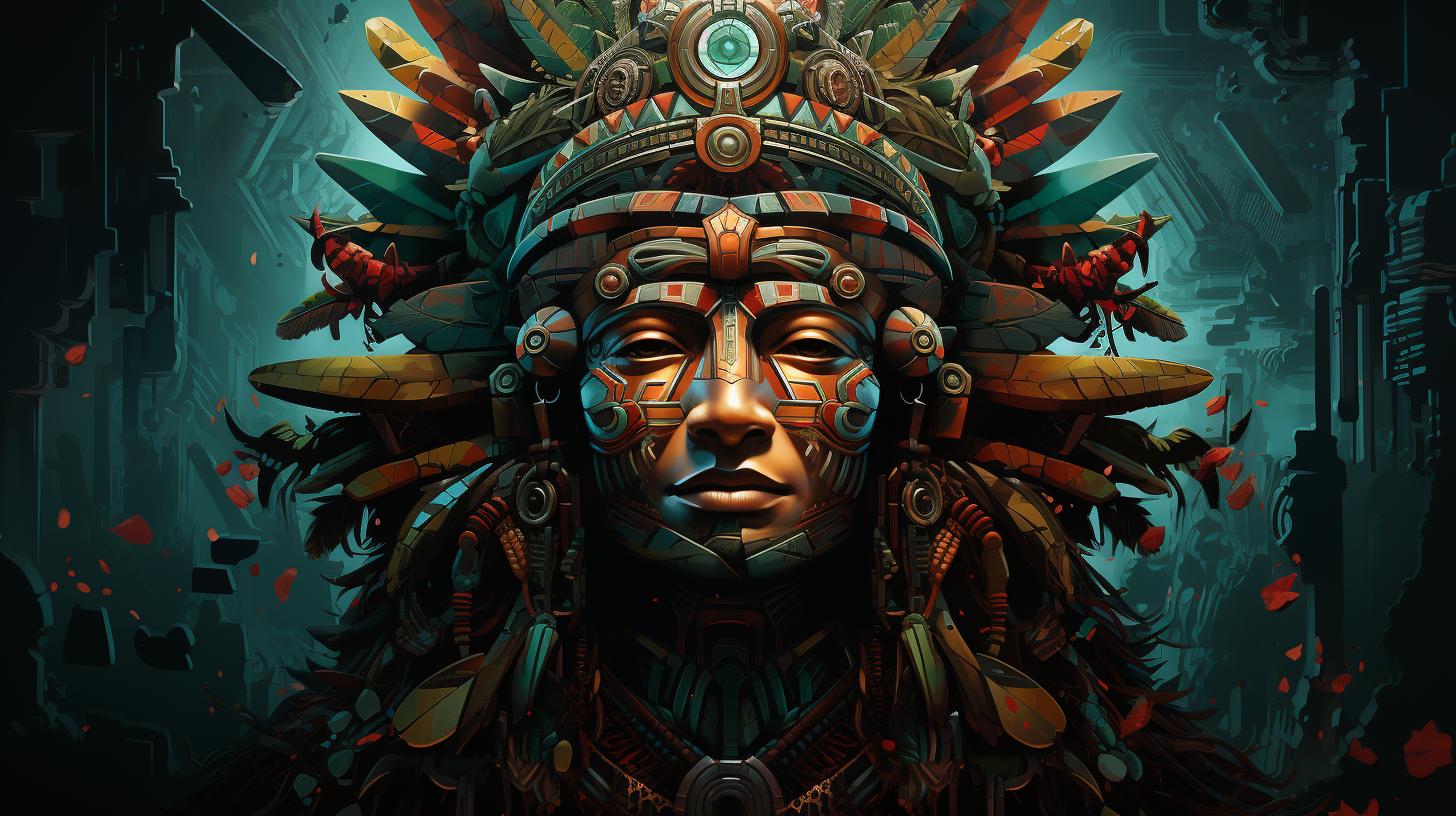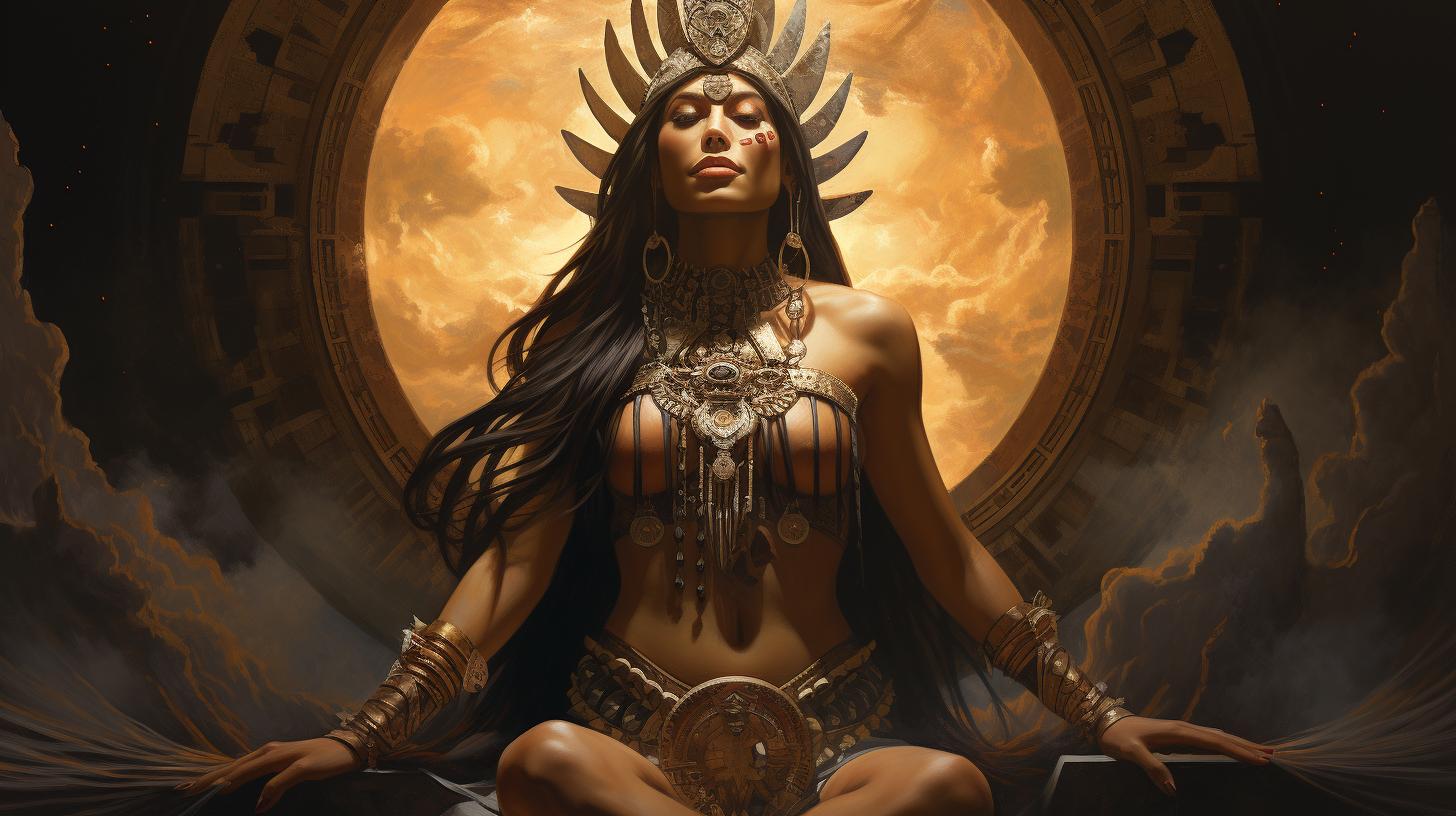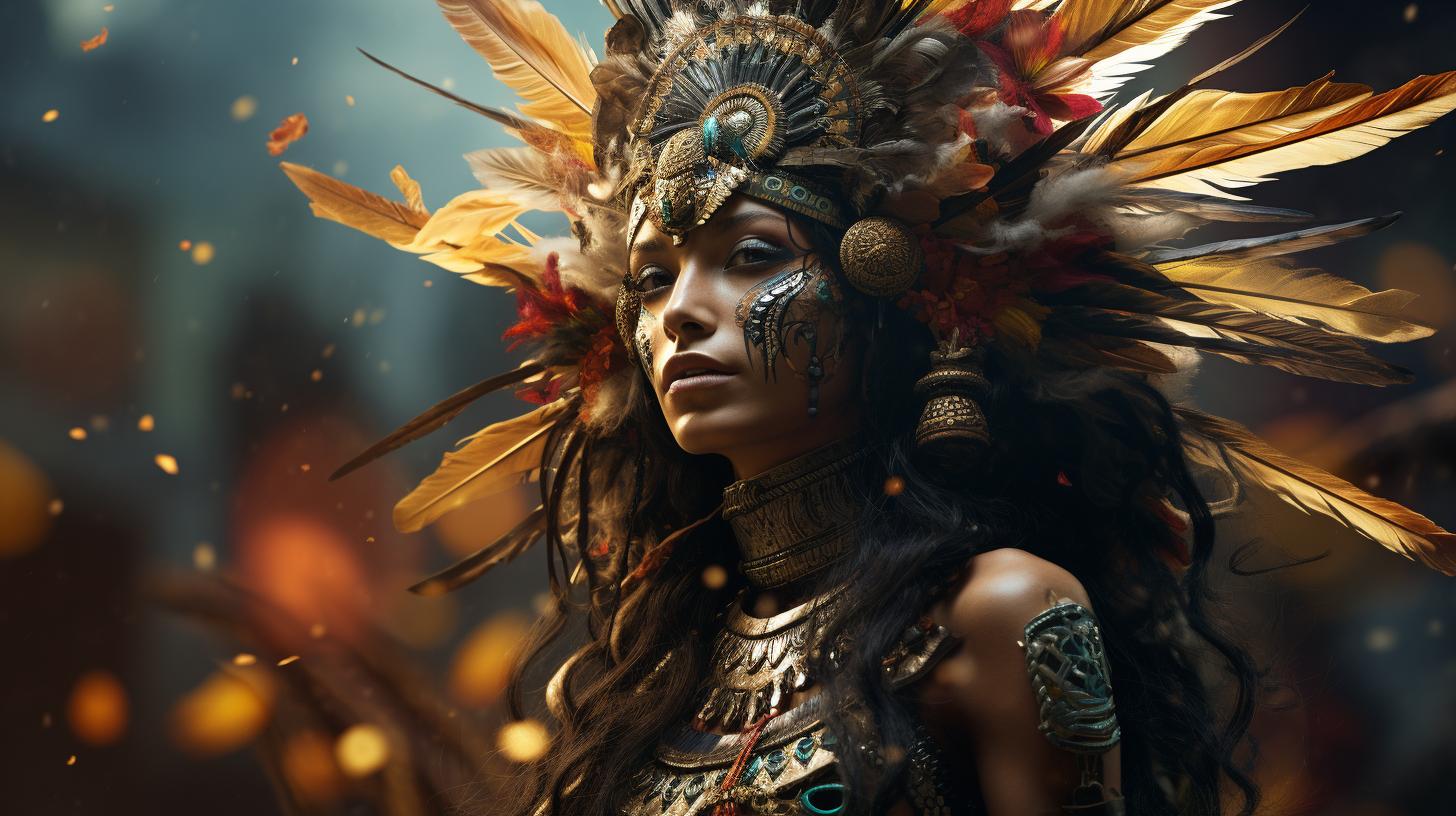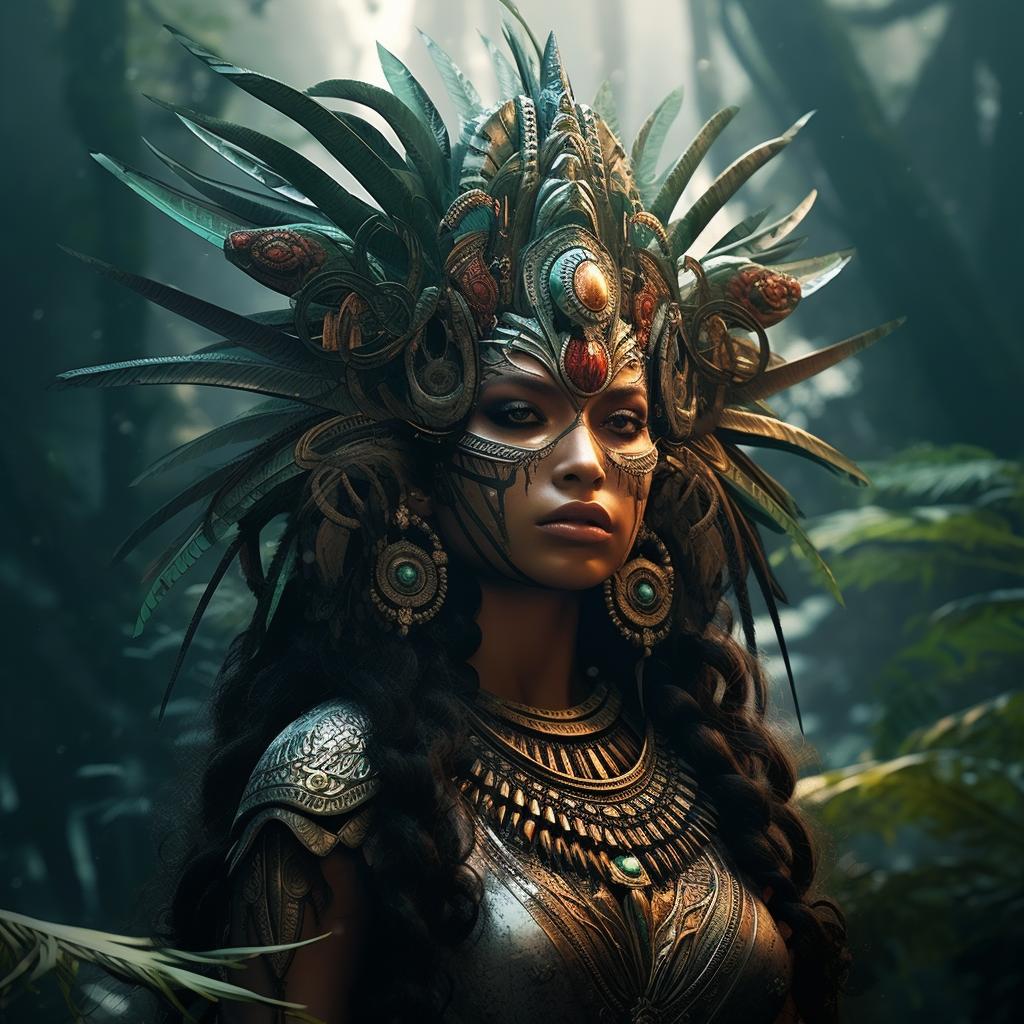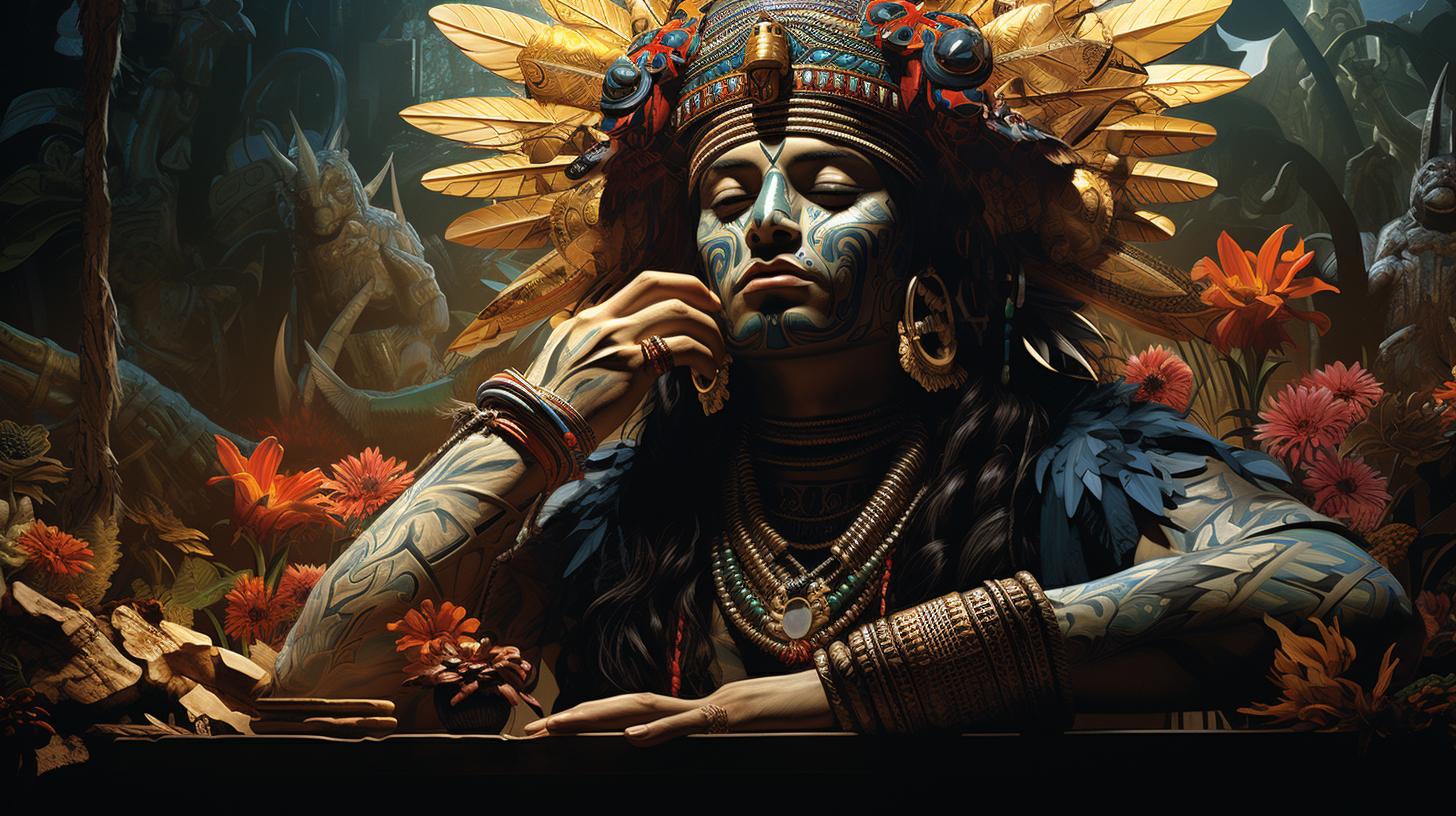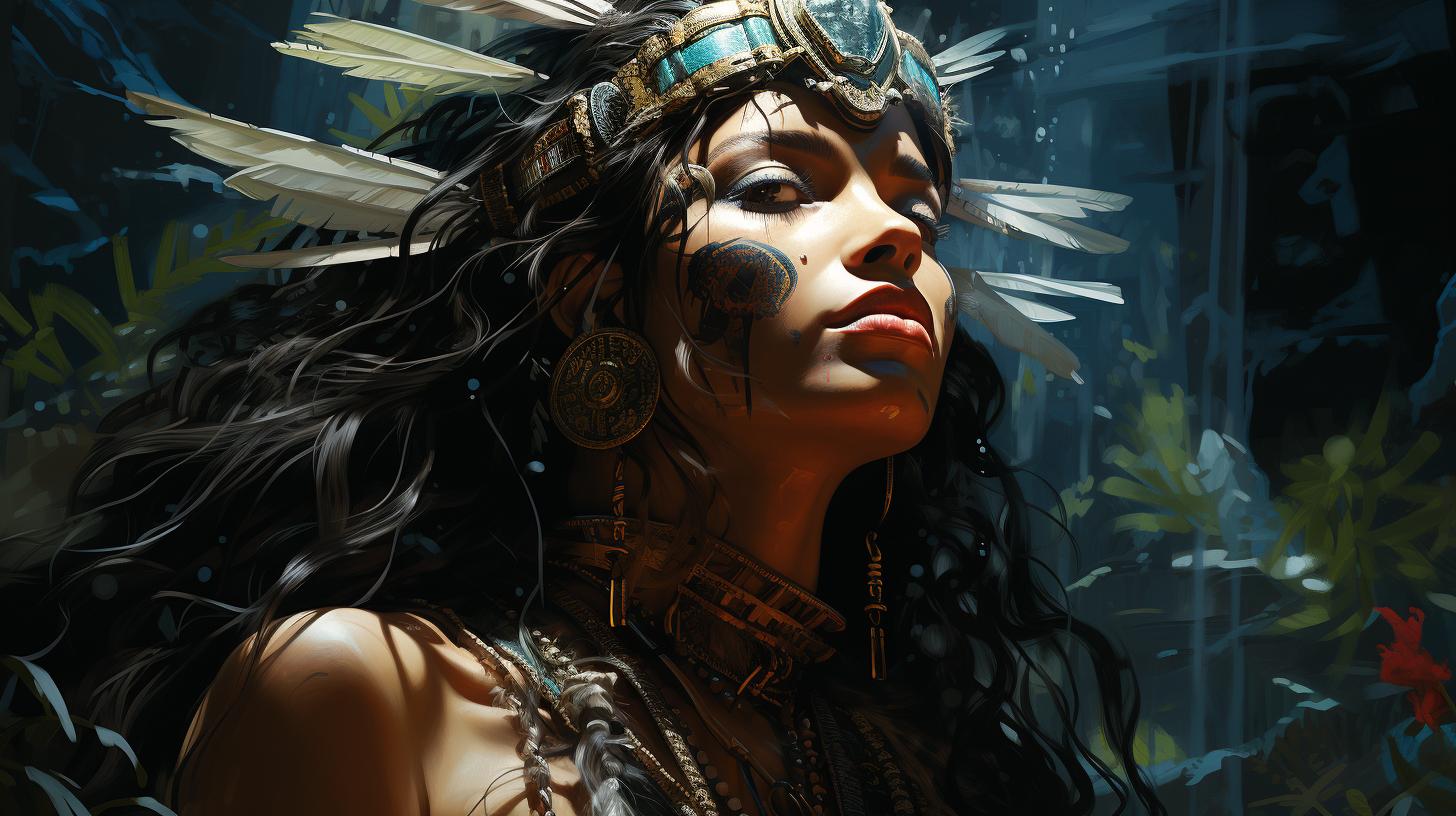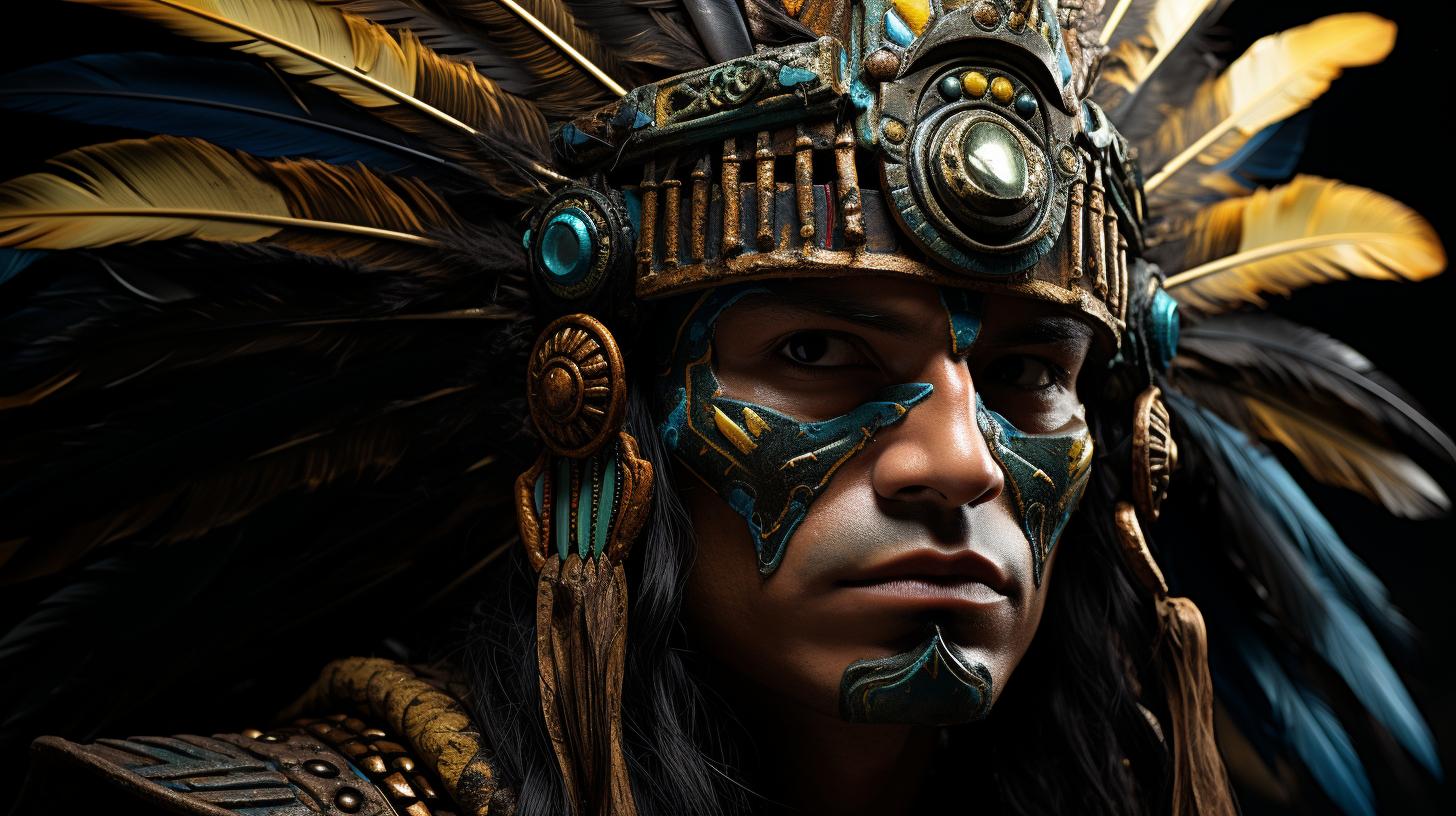Ixtlilton Aztec God: Unveiling the Healing Powers of this Ancient Deity
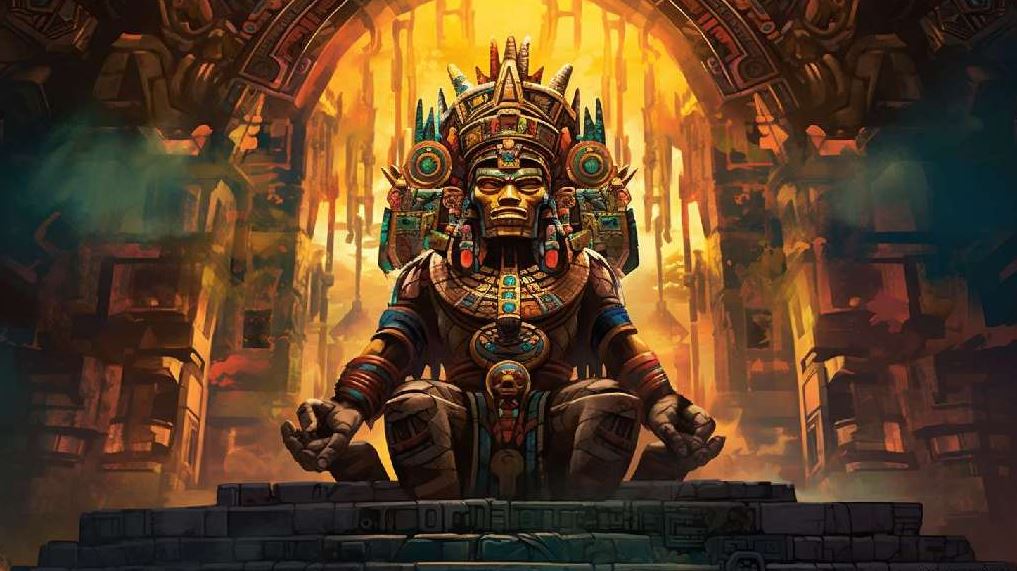
Ixtlilton Aztec god, also known as ‘Small Black Face’, holds a significant role in Aztec mythology. This deity is associated with healing and medicine, capable of curing ailments with just a touch.
As a mischievous dark-skinned figure, Ixtlilton is closely linked to Tezcatlipoca, another powerful god of Aztec pantheon. Depicted with sun-related symbols, Ixtlilton practices hydromancy and is revered as a deity who brings peace and good sleep to children.
This article explores the origins, attributes, worship, legends, and importance of Ixtlilton in Aztec culture, shedding light on the intriguing facets of this ancient god.
Overview of Ixtlilton Aztec God
The Ixtlilton Aztec god holds significant importance in Aztec mythology for his association with healing and medicine. This section explores the origins, history, and role of Ixtlilton within Aztec culture.
Origins and History of Ixtlilton
The origins of Ixtlilton trace back to ancient Aztec beliefs and mythology, where he emerged as a deity of healing and restoration. Throughout history, his presence and influence grew, becoming an integral part of Aztec religious practices.
Role and Significance in Aztec Mythology
Ixtlilton played a crucial role in Aztec society, particularly in the realm of health and well-being. As the god of medicine, he possessed the power to heal diseases and cure ailments with a single touch.
His mischievous nature and dark-skinned depiction symbolized his ability to defy illnesses and poisons.
Additionally, Ixtlilton had a close connection with Tezcatlipoca, the Lord Smoking Mirror. Both deities shared the power to reveal the sins of mortals and determine their fates. Ixtlilton practiced hydromancy, a form of divination using dark water reflections, further highlighting his mysterious and spiritual role.
Moreover, Ixtlilton’s association with sun-related symbols, such as the fan of red arara feathers, sun flags, and emblems on his clothing and sandals, emphasized his connection to vitality and life force within Aztec cosmology.
Ixtlilton, the Aztec god of healing and medicine, possesses various attributes and symbolism that reflect his significance in Aztec mythology.
Healing Powers and Connection to Medicine
One of the key attributes of Ixtlilton is his extraordinary healing powers. With a single touch, he has the ability to cure any illness or disease, making him a revered figure among the Aztec people.
His association with medicine is deeply rooted in Aztec society, as he is believed to have the knowledge and expertise to restore health and well-being.
Ixtlilton’s connection to medicine goes beyond physical healing. He is also associated with the spiritual and emotional aspects of well-being, emphasizing the holistic nature of his healing abilities. It is said that his touch not only heals the body but also brings peace and balance to the soul.
Association with Tezcatlipoca and Divination
Ixtlilton shares a close association with Tezcatlipoca, the powerful Aztec god known as the Lord Smoking Mirror. Together, they possess the ability to reveal the sins of mortals and determine their fates.
In addition to his role in healing, Ixtlilton practices the art of divination through hydromancy, which involves using reflections in dark water to gain insight into the spiritual and future aspects of life.
This connection to divination highlights his role as a guide and interpreter of fate and destiny.
The association with Tezcatlipoca and divination showcases Ixtlilton’s dual nature, encompassing both healing and the power to unveil hidden truths, making him a multidimensional deity within the Aztec pantheon.
Depiction and Symbolic Elements of Ixtlilton
Ixtlilton is often depicted as a mischievous dark-skinned man, symbolizing his enigmatic and unpredictable nature. He is adorned with sun-related symbols, such as a fan of red arara feathers, a sun flag, and sun emblems on his clothing and sandals.
These symbols represent his connection to celestial forces and the life-giving power of the sun.
Additionally, Ixtlilton’s depiction with a small black face symbolizes his association with healing and the curación of diseases. This representation serves as a visual reminder of his ability to restore health and protect humanity from the harms of illness.
The combination of these symbolic elements in Ixtlilton’s depiction emphasizes his complex persona and attributes, blending healing, divination, and sun-related symbolism into a multifaceted representation.
Worship and Rituals Surrounding Ixtlilton
Ixtlilton, the Aztec god of medicine and healing, was revered through various worship practices and rituals within Aztec society. This section explores the worship and rituals associated with Ixtlilton, shedding light on the significance of this deity in Aztec culture.
The Temple of Ixtlilton and Healing Practices
The Temple of Ixtlilton served as a sacred space dedicated to the worship and healing practices associated with the god. This wooden temple stood as a testament to the belief in Ixtlilton’s powers of disease cure and ailment recovery.
Within the temple, priests specialized in healing performed rituals and ceremonies in honor of the god.
Devotees seeking healing or relief from illnesses would bring their sick children to the temple. The priests, impersonating Ixtlilton, would administer a special black water known as itlilauh to the children.
This water was believed to possess healing properties and was exclusively given to the sick. The ceremonies and rituals within the temple were centered around invoking Ixtlilton’s powers to bring about healing and wellness.
The Use of Itlilauh: Special Black Water in Ceremonies
Itlilauh, the special black water used in ceremonies, was considered a powerful medium for Ixtlilton’s healing energy. The priests who impersonated Ixtlilton were entrusted with handling and administering this sacred water to those seeking healing.
Itlilauh was believed to cleanse and purify the spirit, facilitating the healing process.
The use of itlilauh in ceremonies was a crucial element in connecting the devotees with the divine intervention and power of Ixtlilton. Through rituals and offerings, the priests ensured that itlilauh was used appropriately and respectfully, maintaining the sanctity of the healing ceremonies.
Ixtlilton’s Influence on Aztec Society and Life
Ixtlilton’s presence in Aztec society extended beyond his role as a healing god. The worship and reverence of Ixtlilton played a significant part in the daily lives of the Aztec people.
His influence permeated various aspects of society, including art, dance, and divination.
Artistic representations of Ixtlilton often featured symbols associated with the sun, such as red arara feathers, sun flags, and sun emblems on clothing and sandals. This highlighted his connection to celestial forces and the life-giving properties of the sun.
Ixtlilton’s association with divination and hydromancy, utilizing dark water reflections, showcased his role as a revealer of mortals’ sins and their subsequent fates. His ability to discern the actions and morality of individuals added to his significance within Aztec society.
Overall, Ixtlilton’s worship and rituals provided a sense of spiritual guidance and healing to the Aztec people. His presence and influence facilitated the maintenance of physical and spiritual well-being, ensuring the continued prosperity of the community.
Legends and Stories about Ixtlilton
Legends and stories surrounding Ixtlilton, the Aztec god of medicine and healing, have been passed down through generations, providing insights into his fascinating encounters and extraordinary powers.
Ixtlilton’s Encounters with Mortals and their Sins
According to ancient tales, Ixtlilton possessed the ability to reveal the sins of mortals and determine their fates. It is said that he would appear before individuals who sought his assistance, exposing their wrongdoings and guiding them towards repentance and redemption.
These encounters served as a catalyst for personal growth and transformation, emphasizing the god’s role as not only a healer but also a harbinger of moral accountability.
Folklore and Beliefs Related to Ixtlilton’s Powers
Ixtlilton’s powers were shrouded in folklore and beliefs that attributed miraculous healing abilities to him. It was believed that he possessed the capability to cure any illness with a single touch, and his mere presence was said to bring comfort and relief to the afflicted.
The stories often depicted Ixtlilton as a mischievous yet benevolent deity, using his powers to alleviate suffering and restore balance to the lives of those in need.
One popular belief associated with Ixtlilton’s powers was the notion that he was immune to diseases and poisons. This added to the reverence and awe surrounding the god, elevating his status as a divine figure capable of restoring health and safeguarding the community from afflictions.
Ixtlilton’s Role in Maintaining Health and Well-being
Ixtlilton played a crucial role in the maintenance of health and well-being in the Aztec society. As the god of medicine and healing, his presence was sought after in times of illness and distress.
People would bring their sick children to his temple, where priests impersonating Ixtlilton would administer the sacred black water known as itlilauh. This water, believed to possess potent healing properties, was given exclusively to the sick under the premise of Ixtlilton’s intervention.
Furthermore, Ixtlilton’s significance extended beyond the physical realm. His influence on Aztec society emphasized the connection between physical well-being and spiritual harmony. The god’s association with dance, divination, and the calendar underscored the comprehensive approach of the Aztecs towards maintaining a balanced and healthy lifestyle.
Through legends and folklore, the stories of Ixtlilton continue to inspire reverence for this powerful deity who preserves humanity’s well-being and ensures freedom from disease.
Importance of Ixtlilton in Aztec Culture
Ixtlilton plays a profound role in Aztec religion and mythology, serving as a revered deity whose significance extends beyond the domain of healing and medicine. This section explores Ixtlilton’s position within Aztec culture and his enduring impact on various aspects of Aztec life.
Ixtlilton’s Place in Aztec Religion and Mythology
In Aztec religion, Ixtlilton is considered a powerful being who safeguards humanity from disease and brings peace to children. As a god of healing, he holds a prominent place among the many deities revered by the Aztecs.
His ability to cure diseases and his immunity to illnesses and poisons highlight his role as a protector and benefactor.
Ixtlilton’s mischievous nature and association with Tezcatlipoca, the Lord Smoking Mirror, emphasize his connection to the divine realm. Just like Tezcatlipoca, Ixtlilton possesses the ability to reveal the sins of mortals, thus influencing their fate.
This portrayal establishes Ixtlilton as a significant judge of character and a figure central to moral accountability in Aztec mythology.
Ixtlilton’s Connection to Aztec Calendar and Rituals
The Aztec calendar played a crucial role in their religious practices and daily life. Ixtlilton is intricately linked to this calendar system and its associated rituals. His presence in the calendar reflects the Aztecs’ belief in his influence on the passage of time, particularly in relation to significant events and ceremonies.
Furthermore, Ixtlilton’s connection to divination practices and hydromancy demonstrates his association with the spiritual realm and the quest for knowledge. The Aztecs sought his guidance and insights by interpreting reflections in dark water, showcasing his role as an intermediary between mortals and the divine.
Legacy and Influence of Ixtlilton in Modern Times
Despite the passing of centuries, Ixtlilton’s legacy continues to resonate in contemporary society. His association with health, healing, and the pursuit of well-being remains influential. Many modern-day healing practices in Mexico and beyond draw inspiration from the ancient traditions associated with Ixtlilton and his temple.
Additionally, Ixtlilton’s role as a deity connected to dance, divination, and the calendar holds cultural significance. Traditional Aztec dance performances often pay homage to Ixtlilton, showcasing his mythical presence and continuing presence in festive celebrations.
In conclusion, Ixtlilton occupies a significant place in Aztec culture, with his influence extending beyond the realm of healing. His role as a judge, his connection to important rituals, and his enduring legacy make him a central figure in Aztec religion and mythology.
The reverence for Ixtlilton, both in ancient times and in the modern world, demonstrates the lasting importance and impact of this Aztec god…

